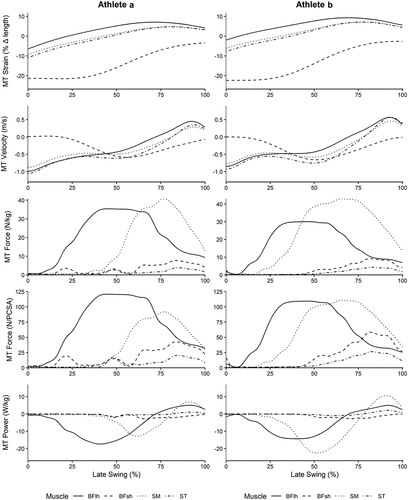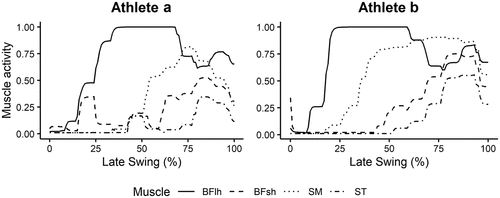Figures & data
Figure 1. Musculotendon (MT) strain (%), velocity (m/s), force (N/kg and (N/cm3) and power (W/kg) for each of the four hamstring muscles, across the late swing phase, for athletes a and B. Late swing phase was defined as beginning at peak knee flexion (0%) and ending at foot contact (100%).

Table 1. Peak MTU strain, velocity, force and power absorption during the late swing phase for each hamstring muscle.
Table A1. Generic properties of the hamstring muscles used in the current study.
Table A1. Residual forces (N) applied at the pelvis during inverse dynamics pre and post RRA.
Table A2. Residual moments (Nm) applied at the pelvis during inverse dynamics pre and post RRA.
Table A3. Kinematic adjustments resulting from RRA in order to reduce the required residual loads.
Table A4. Kinematic errors resulting from CMC. These represent the difference between experimental generalized coordinates and those predicted by the model.
Table A5. Residual forces (N) and moments (Nm) applied at the pelvis during CMC.
Table A6. Reserve actuator contribution (%) to joint torques in the leg of interest (right leg) during CMC.
Data availability statement
The data that supports the findings of this study are available in the appendices of this article.

